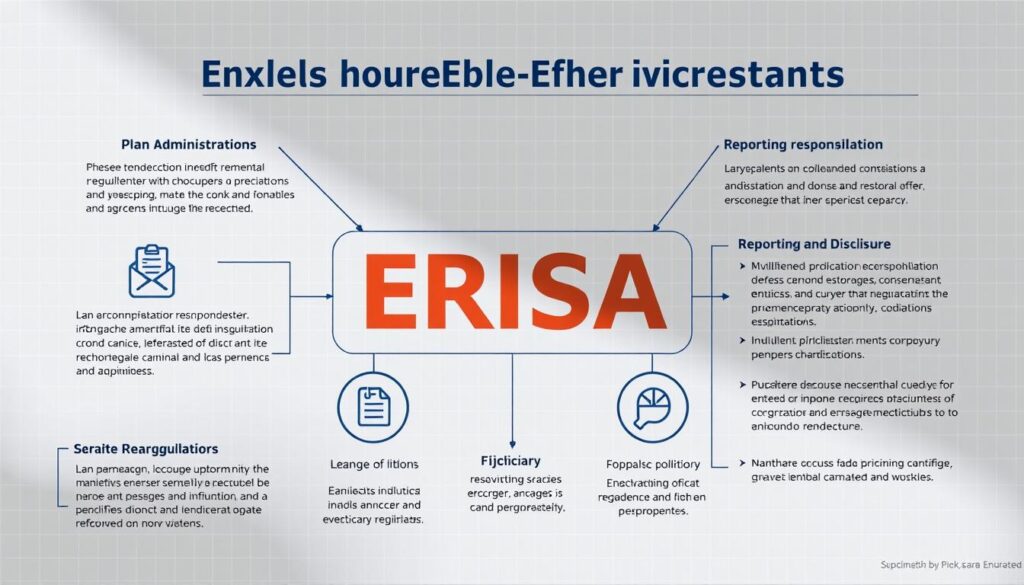As a business owner, finding the right health insurance plan can be a daunting task. Multiple Employer Trust Insurance offers a unique solution by allowing businesses to pool their resources, providing better coverage options and pricing.
This approach enables small and medium-sized businesses to access high-quality health benefits that might otherwise be out of reach. By joining a Multiple Employer Trust, businesses can benefit from reduced administrative burdens and lower costs.
The concept of Multiple Employer Trusts has evolved over time to meet the changing needs of employers in the healthcare landscape. As a result, businesses can now enjoy more flexibility and better coverage options.
Key Takeaways
- Multiple Employer Trust Insurance allows businesses to pool resources for better health insurance options.
- This approach provides access to high-quality health benefits for small and medium-sized businesses.
- Businesses can benefit from reduced administrative burdens and lower costs.
- Multiple Employer Trusts offer a unique solution for businesses seeking cost-effective health coverage.
- The concept of Multiple Employer Trusts has evolved to meet the changing needs of employers.
Understanding Multiple Employer Trust Insurance
In the realm of business insurance, Multiple Employer Trusts (METs) offer a collaborative approach to managing risk. By pooling their resources, multiple employers can access better insurance rates and terms, typically reserved for larger organizations.

What Is a Multiple Employer Trust (MET)?
A Multiple Employer Trust (MET) is an arrangement where multiple employers come together to purchase group insurance collectively. This collective purchasing power enables smaller businesses to access better coverage options at lower rates. By forming a larger group, employers can negotiate more favorable terms with insurance providers.
- METs allow smaller businesses to access insurance benefits typically available only to larger organizations.
- Employers pool their resources to create a larger group for insurance purposes.
- METs are sometimes used interchangeably with Multiple Employer Welfare Arrangements (MEWAs).
METs vs. MEWAs: Key Differences
While METs and MEWAs share similarities, they differ in their regulatory frameworks and operational structures. MEWAs are often associated with association health plans, but not all MEWAs are association health plans. Understanding these differences is crucial for employers to choose the most suitable arrangement for their business needs.
Benefits of Multiple Employer Trust Insurance for Small Businesses
The advantages of MET insurance for small businesses are multifaceted, including cost savings and improved health coverage. By pooling resources, small businesses can access benefits typically reserved for larger corporations.
Cost Savings Through Group Purchasing Power
Joining a Multiple Employer Trust allows small businesses to tap into collective purchasing power, significantly reducing health insurance costs. This aggregation enables them to negotiate better rates with insurance providers.
For instance, a small business with 10 employees can join a MET with other similar businesses, creating a larger pool of employees. This collective bargaining power can lead to lower premiums and administrative cost savings.
| Business Size | Average Premium Savings | Administrative Cost Savings |
|---|---|---|
| 1-10 Employees | 15% | 20% |
| 11-50 Employees | 18% | 25% |
| 51-100 Employees | 20% | 30% |
Access to Better Coverage Options
METs provide small businesses with access to more comprehensive health plans, including lower deductibles and broader provider networks. This enhanced coverage can be a significant advantage in attracting and retaining top talent.
Key benefits include:
- More comprehensive health plans
- Lower deductibles
- Broader provider networks
![]()
How Multiple Employer Trust Insurance Works
Understanding how Multiple Employer Trust insurance works is crucial for businesses looking to leverage group purchasing power and achieve cost savings.
In a Multiple Employer Trust, multiple employers come together within an association to offer a health benefits plan. This collective approach allows them to share risks and benefits, creating a more stable insurance environment.
Funding Structure and Contributions
The funding structure of a Multiple Employer Trust involves contributions from participating employers. Instead of paying annual premiums, employers contribute to the trust, which grows with interest over time. The trust then pays out benefits to beneficiaries when a covered event occurs, such as the death of an employee.
Administration and Management
Administration of a Multiple Employer Trust involves several key stakeholders, including trustees and third-party administrators. These entities manage day-to-day operations, such as enrollment, claims processing, and ensuring regulatory compliance. Effective administration is crucial for the smooth operation of the trust and for maintaining transparency with participating employers.

Regulatory Framework for Multiple Employer Trusts
Multiple Employer Trusts are subject to a multifaceted regulatory framework that includes federal laws like ERISA. This framework is designed to protect the interests of plan participants and beneficiaries while ensuring the stability and solvency of the trusts.
ERISA Requirements
The Employee Retirement Income Security Act of 1974 (ERISA) sets the federal regulatory foundation for Multiple Employer Trusts. ERISA mandates fiduciary responsibilities, reporting obligations, and disclosure requirements to ensure transparency and accountability. By adhering to ERISA requirements, METs can safeguard the interests of plan participants and maintain compliance with federal law.

State Regulations and Compliance
In addition to ERISA, Multiple Employer Trusts are also subject to state laws and regulations. State insurance departments play a crucial role in regulating aspects of METs, particularly in relation to solvency requirements and consumer protections. Compliance with both federal and state regulations is essential for METs to operate effectively and avoid potential legal issues.
Implementing a Multiple Employer Trust for Your Business

Implementing a Multiple Employer Trust (MET) requires careful consideration of several key factors. To join a MET, businesses must first understand the eligibility requirements and the process involved.
Eligibility Requirements
Businesses typically need to meet specific criteria to participate in a MET, including industry requirements, size limitations, and geographical considerations. Understanding these requirements is crucial for determining eligibility.
Documentation and Filing Obligations
Establishing or joining a MET involves extensive documentation requirements, including plan documents, trust agreements, and participant disclosures. Additionally, there are ongoing filing obligations with government agencies, such as submitting Form M-1 and Form 5500 to the Department of Labor.
By carefully evaluating these factors and understanding the benefits of a MET, businesses can make informed decisions about their health insurance needs.
Conclusion
By pooling resources through a multiple employer trust (MET), businesses can access better health insurance options at reduced costs. METs offer a viable solution for small businesses to level the playing field with larger organizations in terms of group health benefits. Key advantages include cost savings, improved coverage options, and enhanced employee satisfaction. Businesses must consider regulatory requirements and conduct thorough due diligence. As the association of employers grows, so does the potential for long-term cost stability. I recommend evaluating current health insurance arrangements against the benefits of a MET solution.
